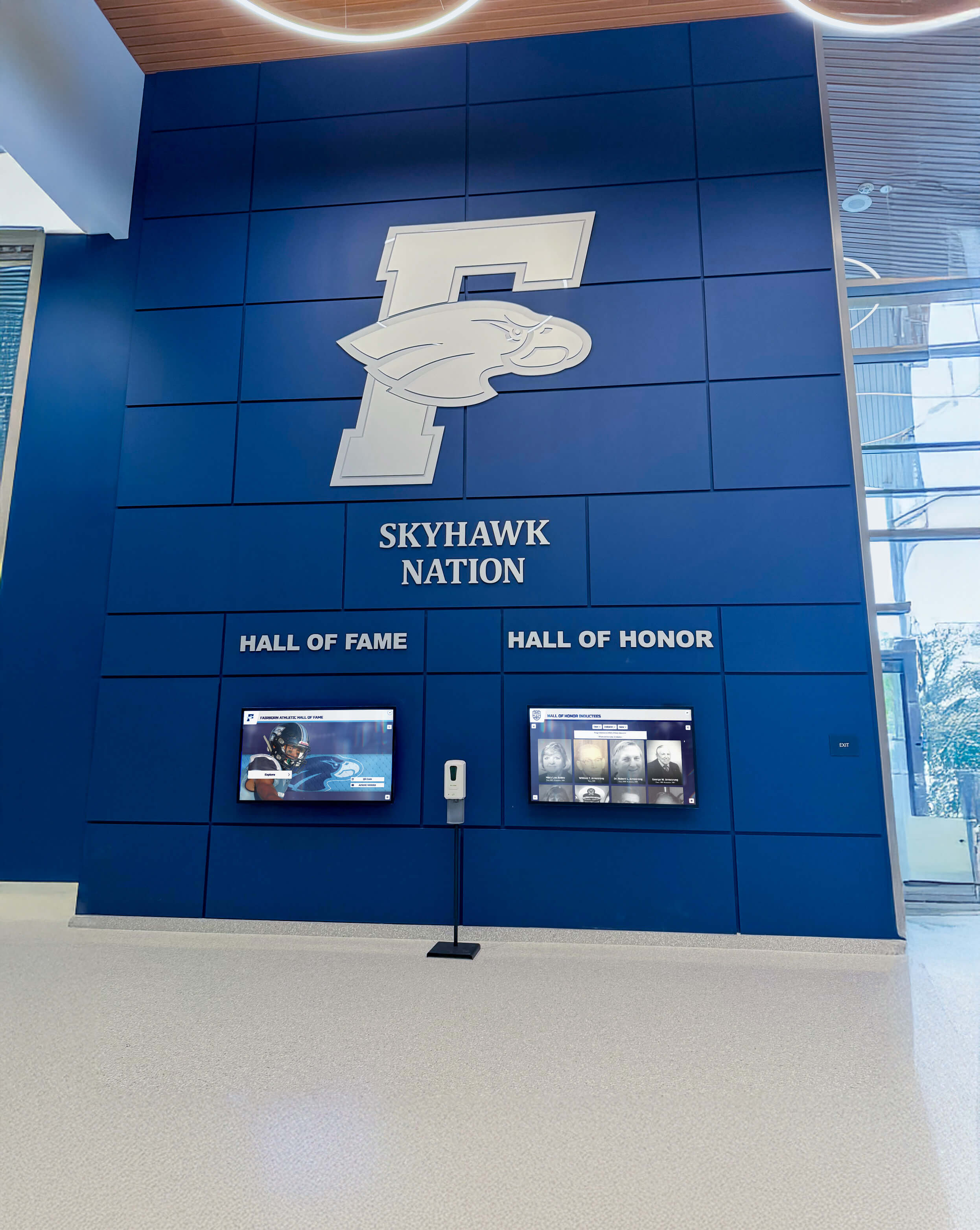Honor roll recognition represents one of education’s most established traditions, celebrating students who demonstrate academic excellence through consistently high performance. Yet many schools continue displaying honor roll achievements through outdated bulletin boards that limit recognition capacity, require constant manual updates, and fail to capture the attention of today’s technology-native students and families.
Interactive touch boards are revolutionizing how schools recognize honor roll students, transforming static lists into engaging digital experiences that celebrate achievement while motivating continued excellence. These modern solutions eliminate the space constraints of traditional displays while offering interactive features that make honor roll recognition more accessible, engaging, and meaningful for students, families, and school communities.
Understanding Modern Honor Roll Recognition
Before implementing technology solutions, understanding what makes honor roll recognition effective helps ensure your approach drives genuine achievement while maintaining appropriate standards.
The Purpose of Honor Roll Recognition
Academic recognition serves multiple essential purposes in educational environments:
Motivational Impact
Honor roll recognition motivates students by providing visible acknowledgment of their academic effort and achievement. When students see peers recognized for strong grades, they develop clear understanding of institutional expectations and standards. Public recognition creates positive peer pressure that encourages academic excellence across the full student body.
Students working toward honor roll qualification often demonstrate improved study habits, increased class participation, and stronger organizational skills. Recognition validates that consistent effort produces tangible results, reinforcing behaviors that support long-term academic success.
Communication of Values
Honor roll programs communicate that schools value academic achievement as a core institutional priority. The prominence, quality, and consistency of academic recognition signals to students, families, and communities what matters most in educational environments.
Schools that invest in sophisticated honor roll recognition systems demonstrate commitment to celebrating intellectual achievement alongside athletic and artistic accomplishments. This balanced approach ensures academics receive appropriate emphasis in school culture.
Family Engagement
Honor roll recognition creates positive touchpoints connecting families to schools. Parents take pride in their students’ academic achievements, and recognition provides concrete evidence of educational progress. These positive interactions strengthen school-family partnerships while creating opportunities for celebration and encouragement at home.
Modern digital recognition extends this engagement by enabling family members—including those living far from campus—to view honor roll achievements through web-accessible platforms and mobile devices.

Evolution from Traditional to Interactive Recognition
Traditional honor roll recognition typically involves printed lists posted on bulletin boards or published in newsletters. While these approaches acknowledge achievement, they face significant limitations:
Traditional Recognition Limitations
- Space constraints force schools to display only current quarter or semester honor rolls, removing past recognition to make room for new lists
- Manual updates require significant staff time for printing, mounting, and maintaining displays
- Limited engagement as static paper lists quickly become wallpaper that students and families barely notice
- Accessibility issues for families who cannot physically visit campus to view recognition
- Minimal context beyond names and basic grade categories
- Deterioration as printed materials fade, tear, or become damaged over time
Interactive Touch Board Advantages
Modern interactive displays address these limitations while adding capabilities that significantly enhance recognition impact:
- Unlimited capacity allowing comprehensive archives of all honor roll recipients across multiple years
- Easy digital updates through intuitive content management systems requiring minutes rather than hours
- Interactive exploration as students and families search, filter, and browse honor roll achievements
- Remote accessibility via web platforms enabling viewing from anywhere
- Rich profiles featuring photos, achievement details, and additional context
- Professional presentation maintaining appearance quality indefinitely
- Multiple recognition tiers displayed simultaneously without competing for limited space
- Engagement analytics showing how community interacts with recognition content
Schools implementing interactive touch boards for honor roll recognition report dramatic increases in student and family engagement compared to traditional approaches.
Establishing Fair Honor Roll Criteria
Effective honor roll programs begin with clear, fair criteria that maintain appropriate standards while providing achievable goals for students at various performance levels.
Standard Grade-Based Criteria
Most schools establish honor roll qualification based on grade point average thresholds for specific marking periods:
Common Honor Roll Tier Structure
High Honor Roll / First Honors
- GPA of 3.75-4.0 (unweighted) or 4.25-5.0+ (weighted)
- Often requires all A grades (possibly one A-minus allowed)
- Represents highest academic achievement tier
- Typically includes 10-20% of student body
Honor Roll / Second Honors
- GPA of 3.25-3.74 (unweighted) or 3.75-4.24 (weighted)
- Requires predominantly A and B grades
- Recognizes strong academic performance
- Typically includes 20-30% of student body
Merit Roll / Third Honors
- GPA of 3.0-3.24 (unweighted) or 3.25-3.74 (weighted)
- Requires B average or better
- Acknowledges solid academic performance
- May include an additional 15-25% of students
Principal’s List / Perfect GPA
- 4.0 unweighted GPA with no grades below A
- Highest possible academic achievement
- Often represents 5-10% of student body
- May include additional criteria like perfect attendance
Schools should clearly communicate whether they use weighted or unweighted GPA calculations, how plus/minus grades factor into qualification, and the specific marking period covered by each honor roll cycle.

Additional Qualification Considerations
Beyond pure GPA thresholds, many schools incorporate additional criteria ensuring honor roll recognition reflects comprehensive academic excellence:
Citizenship and Behavior Standards
Some schools require that honor roll students demonstrate appropriate behavior and citizenship:
- No major disciplinary incidents during the marking period
- Satisfactory citizenship marks in all courses
- No academic integrity violations or cheating incidents
- Demonstration of respect for teachers, staff, and peers
- Compliance with school attendance policies
These requirements communicate that academic excellence includes character and conduct alongside grades, though schools should carefully consider whether behavior criteria might create equity concerns for students with certain disabilities or circumstances.
Minimum Course Load Requirements
To ensure honor roll recognition reflects full academic engagement, schools may establish:
- Minimum number of academic courses required for qualification
- Exclusion of study halls or non-academic electives from GPA calculation
- Requirement that students carry age-appropriate course loads
- Consideration of students with legitimate reduced schedules due to medical needs or specialized programs
Grade Distribution Guidelines
Some schools specify acceptable grade distributions rather than relying solely on GPA:
- All grades must be C or higher for any honor roll qualification
- Specific maximum number of B grades for high honor roll
- No incomplete grades during the qualification period
- Requirement that all courses are completed satisfactorily
These additional criteria help ensure honor roll recognition reflects consistent excellence rather than averaging high and low performance.
Addressing Equity in Honor Roll Recognition
Fair honor roll systems consider how criteria might unintentionally disadvantage certain student populations:
Considerations for Equitable Recognition
- Weighted vs. Unweighted GPA: Determine whether advanced coursework receives grade weight adjustments and how this impacts students with varying access to honors or AP courses
- Course Availability: Consider how limited advanced course offerings at smaller schools might affect students’ ability to achieve weighted GPAs comparable to larger schools
- Special Education Accommodations: Establish clear policies about how modified coursework affects honor roll eligibility while maintaining appropriate standards
- English Language Learners: Consider whether students in language acquisition programs face barriers to honor roll qualification
- Transfer Students: Determine how grades from previous schools factor into honor roll calculations for new students
- Alternative Schedules: Ensure students in legitimate alternative programs (career-technical, early college, etc.) have fair qualification opportunities
Schools should regularly analyze honor roll data to identify patterns suggesting criteria might disproportionately impact specific populations, adjusting policies when appropriate to maintain both standards and equity.
Designing Effective Honor Roll Touch Board Displays
The visual design and functionality of honor roll touch boards significantly impacts their effectiveness in celebrating achievement and engaging school communities.
Essential Display Features
Modern honor roll touch boards should incorporate these key capabilities:
Intuitive Navigation
Interactive displays must be easily navigable by users of all ages and technical abilities:
- Clear home screen showing current honor roll period and featured students
- Prominent search functionality allowing name-based lookup
- Filter options by honor roll tier, grade level, marking period, and academic year
- Alphabetical browsing options for exploration without specific search targets
- Easy return to home screen from any location within the display
- Accessibility features including screen readers and adjustable text size
Comprehensive Student Profiles
Each honor roll recipient deserves more than name-on-a-list recognition:
- High-quality student photo (yearbook or candid)
- Honor roll tier achieved (High Honor Roll, Honor Roll, Merit Roll)
- Current grade level or graduation year
- Specific GPA achieved (if school policy permits displaying)
- Recognition marking period (Quarter 1, Semester 1, etc.)
- Optional additional achievements or awards during same period
- Teacher or counselor commentary about student (when appropriate)
- Historical honor roll achievements showing consistency over time
These detailed profiles transform simple lists into meaningful celebrations of individual student achievement.
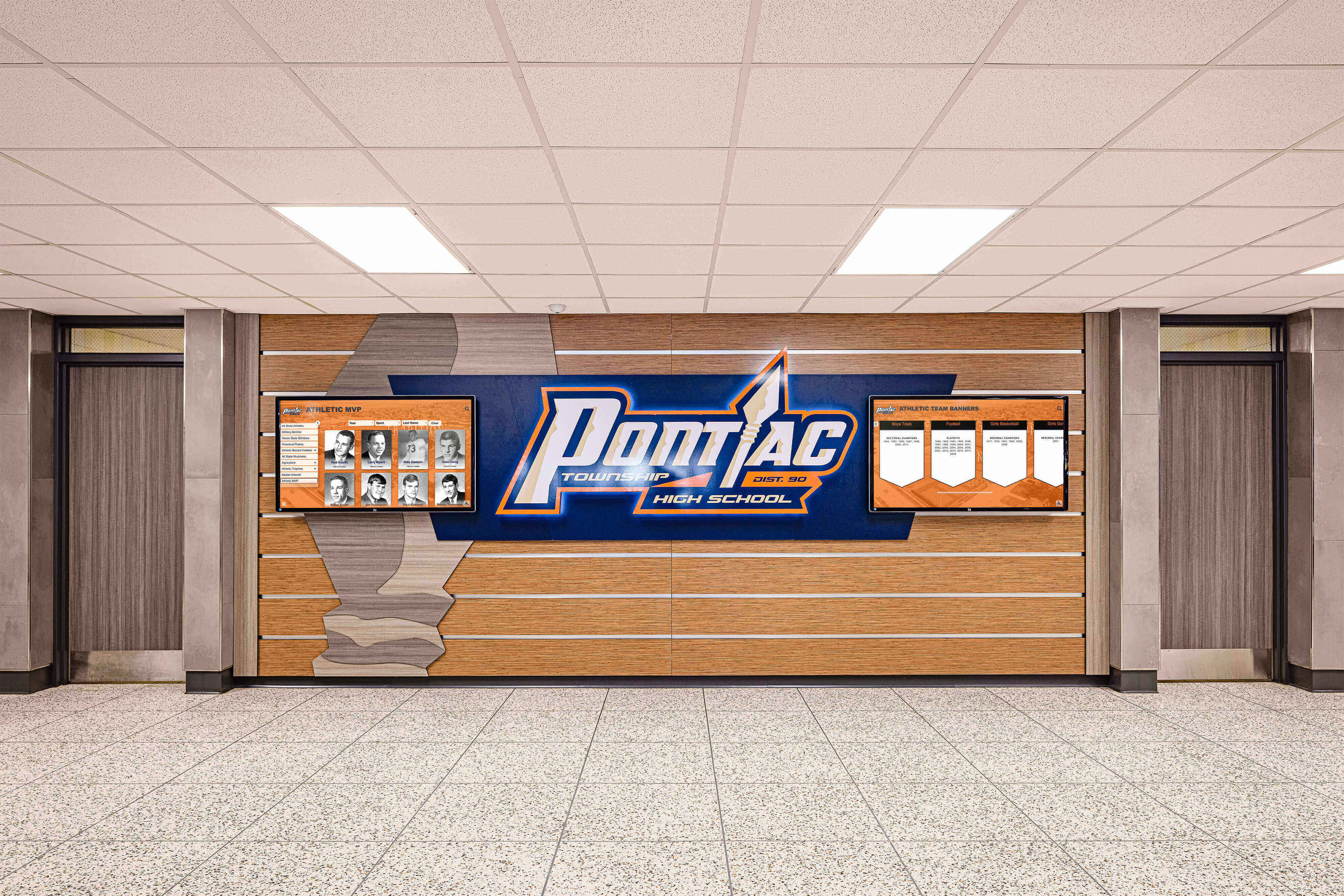
Multiple View Options
Flexible display formats accommodate different exploration preferences:
- Grid view showing multiple honor roll recipients simultaneously
- List view with names and key details in organized format
- Featured student rotations on home screen highlighting random honorees
- Class rankings or top performers (if school philosophy supports public ranking)
- Historical comparisons showing honor roll trends over multiple years
- Celebration screens for perfect GPA students or consistent multi-term honorees
Real-Time Content Updates
Modern systems must support efficient content management:
- Cloud-based updates from any internet-connected device
- Bulk import capabilities for entire honor roll lists
- Scheduled publishing automatically releasing content on specific dates
- Draft preview modes allowing verification before making content live
- Quick-edit functions for correcting errors or adding students
- Automated notifications alerting administrators when updates needed
Schools implementing user-friendly touchscreen software report dramatic reductions in administrative time required to maintain honor roll displays.
Optimal Display Location and Hardware
Physical placement and hardware quality dramatically affect display effectiveness:
High-Traffic Location Selection
Position honor roll displays where they receive maximum visibility:
- Main entrance lobbies creating immediate impression for visitors
- High-traffic hallways near cafeterias, libraries, or main offices
- Academic wings emphasizing achievement in learning spaces
- Commons areas where students gather during breaks or lunch
- Guidance office areas where college and career planning occurs
Multiple display locations provide greater visibility though they require either networked digital displays or creative scheduling if moving a single unit.
Hardware Specifications
Professional-quality displays require appropriate technical specifications:
- Minimum 43" screen size for wall-mounted installations (55" preferred)
- Touchscreen capability with multi-touch support for smooth interaction
- Commercial-grade displays rated for extended operating hours
- Sufficient brightness for areas with significant ambient lighting
- Built-in speakers for optional audio content or narration
- Reliable connectivity (Ethernet preferred, WiFi backup)
- Integrated computer/media player (many all-in-one options available)
Solutions like interactive touchscreen kiosks provide complete turn-key systems specifically designed for educational recognition applications.
Implementation Strategies for Success
Successfully launching or transitioning to interactive honor roll touch boards requires careful planning and systematic implementation.
Planning Phase Considerations
Begin with comprehensive planning addressing these key areas:
Stakeholder Input and Buy-In
Engage relevant stakeholders early in the planning process:
- Teachers: Gather input about honor roll criteria fairness and any qualification concerns they observe
- Students: Survey student perspectives on honor roll importance and how recognition should be displayed
- Parents: Collect family feedback about current honor roll communication effectiveness
- Counselors: Consult about how honor roll recognition affects student motivation and goal-setting
- Administrators: Secure leadership support for necessary budget and resources
- Technology staff: Involve IT personnel in hardware selection and network requirements
This collaborative approach builds support while identifying potential concerns before implementation.
Policy Documentation
Create clear written policies governing honor roll recognition:
- Specific GPA thresholds for each honor roll tier
- Additional qualification requirements (citizenship, attendance, etc.)
- Calculation methodology (weighted vs. unweighted, rounding rules)
- Marking period schedules and recognition timelines
- Transfer student grade incorporation policies
- Special circumstance provisions (medical leave, etc.)
- Appeals process for students or families questioning qualification decisions
- Privacy considerations regarding public display of academic information
Document these policies in student handbooks and on school websites ensuring transparency and consistency.
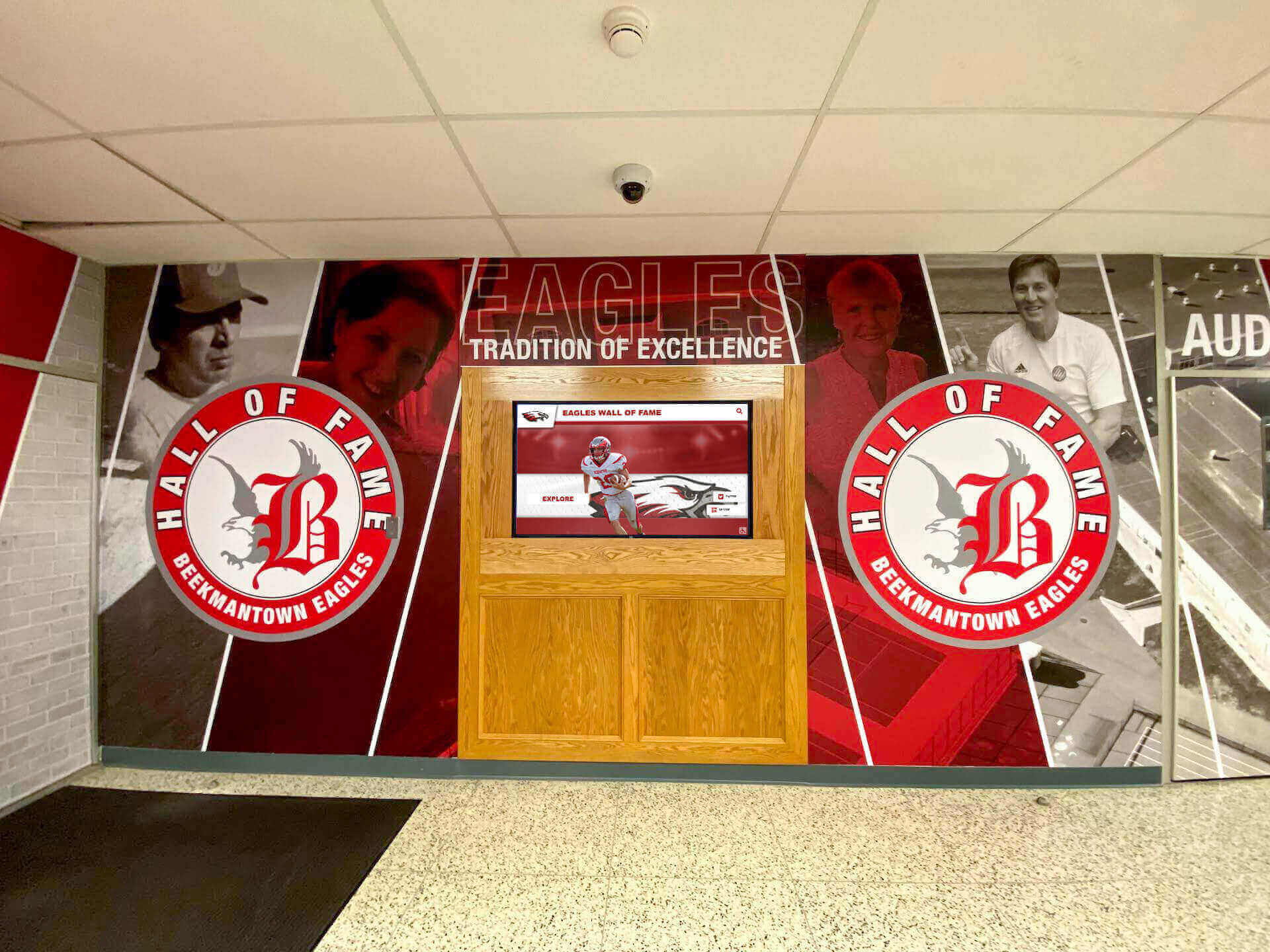
Technology Platform Selection
Choose recognition software and hardware meeting your specific needs:
When evaluating platforms, prioritize:
- Ease of content management requiring minimal technical expertise
- Interactive features engaging students and families
- Scalability supporting program growth over multiple years
- Technical reliability with minimal downtime or maintenance needs
- Vendor support quality and responsiveness
- Total cost of ownership including hardware, software, and ongoing fees
- Integration capabilities with existing student information systems
Many schools find that comprehensive platforms like Rocket Alumni Solutions provide purpose-built features specifically designed for academic recognition applications.
Launch and Communication Strategy
Successful implementation requires clear communication with all stakeholders:
Pre-Launch Communication
Before unveiling your new honor roll touch board:
- Announce the upcoming system through newsletters, emails, and social media
- Explain how the new platform will enhance honor roll recognition
- Share timelines for when current marking period honor rolls will be posted
- Provide tutorials or guides showing families how to access and use the system
- Address any privacy concerns about displaying student information
- Build anticipation through sneak preview photos or brief demonstration videos
Launch Event
Consider hosting a formal unveiling event:
- Schedule during a time when families can attend (evening, open house)
- Invite current honor roll students and their families as special guests
- Provide guided demonstrations showing system features and navigation
- Allow community members to search for themselves in historical archives (if populated)
- Gather immediate feedback about display usability and effectiveness
- Capture photos and videos for subsequent marketing and communication
Ongoing Communication
Maintain consistent communication after launch:
- Announce each new honor roll posting through multiple channels
- Share featured honor roll student profiles through social media
- Include honor roll statistics in administrative reports and board presentations
- Survey families annually about satisfaction with recognition system
- Publish student testimonials about what honor roll achievement means
- Maintain responsive support for technical questions or access issues
Clear, consistent communication ensures the investment in interactive recognition delivers maximum community engagement and impact.
Expanding Beyond Basic Honor Roll Recognition
Interactive platforms enable schools to enhance basic honor roll recognition with additional academic celebrations:
Subject-Specific Academic Recognition
Comprehensive academic recognition extends beyond overall GPA to celebrate specific subject excellence:
Department Honors Programs
Create recognition categories for exceptional performance in specific academic areas:
- Mathematics excellence awards for top performers in math courses
- Science achievement recognition for laboratory and research success
- English and language arts honors for writing and literature accomplishment
- Foreign language proficiency acknowledgment for bilingual students
- Social studies distinction for history and civic engagement
- Arts achievement for visual arts, music, drama, and dance
- Career-technical excellence in specialized pathway programs
These subject-specific recognitions ensure students with particular academic strengths receive appropriate acknowledgment even if their overall GPA doesn’t qualify for honor roll.
Academic Competition Success
Celebrate students representing schools in academic competitions:
- Science Olympiad team members and medalists
- Math competition participants and top scorers
- Academic decathlon and quiz bowl competitors
- Spelling bee and geography bee representatives
- Debate tournament participants and winners
- Model UN delegates and award recipients
- Programming competition and robotics challenge teams
Competition achievements demonstrate academic excellence in action, deserving prominent recognition alongside honor roll qualifications.
Schools can explore diverse academic achievements worth celebrating through comprehensive recognition systems.
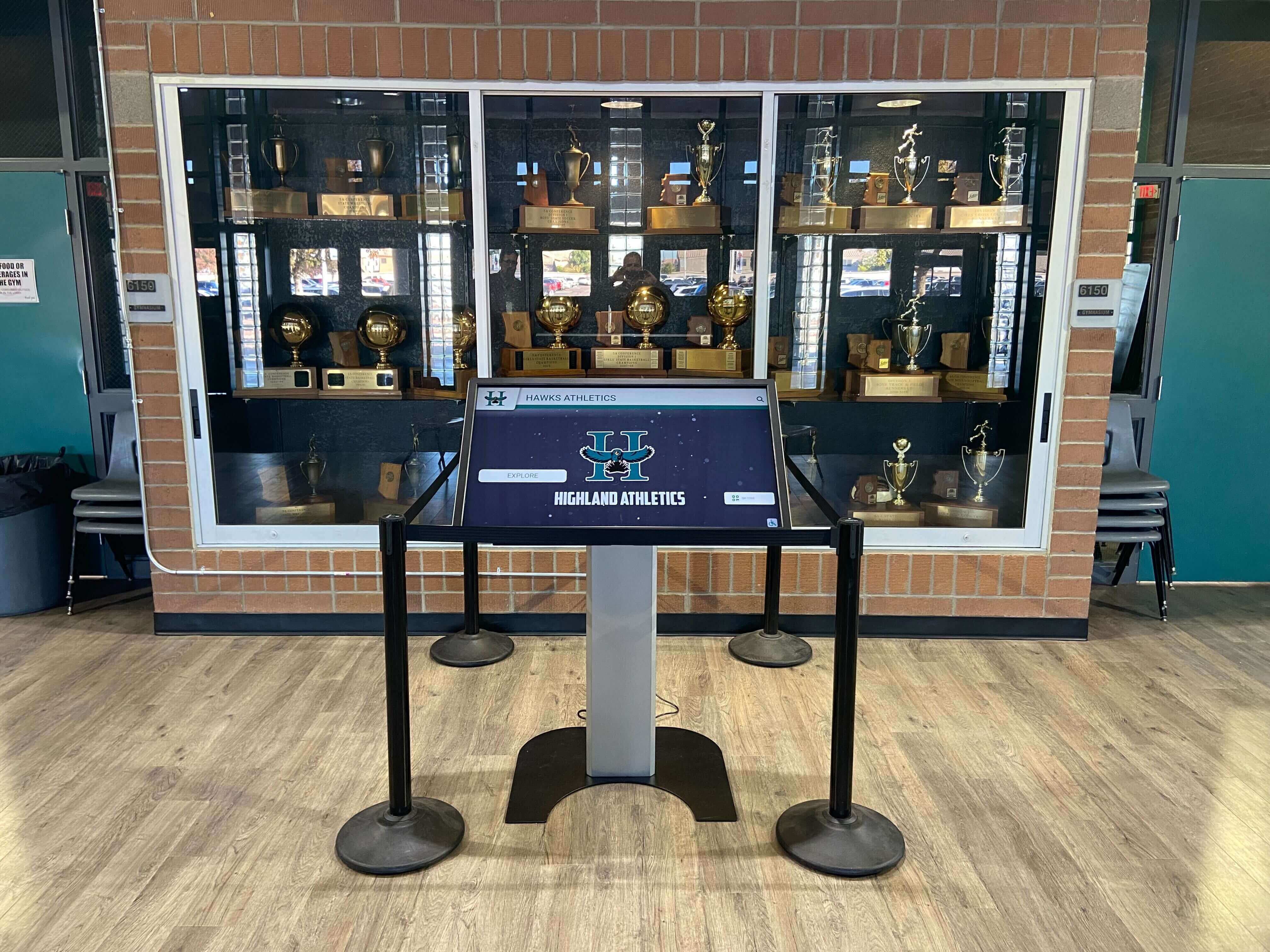
Improvement and Growth Recognition
Balance absolute achievement recognition with acknowledgment of significant academic growth:
Most Improved Student Recognition
Celebrate students demonstrating substantial academic progress:
- Largest GPA increases from previous marking period
- Students moving from below-grade-level to proficient performance
- Dramatic improvements in specific subject areas
- Turnaround stories of students overcoming academic struggles
- Consistent upward trends over multiple marking periods
Improvement recognition motivates students who may not yet qualify for traditional honor roll but are working diligently toward that goal. It communicates that schools value growth and effort, not just absolute achievement levels.
Perfect Attendance and Effort
Academic success requires consistent attendance and sustained effort:
- Perfect attendance acknowledgment for students missing no school days
- Excellent attendance recognition for minimal absences
- Homework completion streaks for students completing all assignments
- Class participation awards for engaged, contributing students
- Study skills development recognition for demonstrated organizational growth
These non-GPA-based recognitions ensure more students experience acknowledgment, creating multiple pathways to school recognition.
Advanced Academic Pathway Recognition
Honor students pursuing rigorous coursework deserve special acknowledgment:
AP and Honors Course Achievement
Recognize students challenging themselves with advanced curriculum:
- AP Scholar designations based on AP exam performance
- Honors program completion at each grade level milestone
- Dual enrollment students earning college credits while in high school
- International Baccalaureate program participants and diploma candidates
- Early college program enrollment and degree completion
Advanced pathway recognition validates the extra effort required for rigorous coursework, encouraging more students to challenge themselves academically.
College Readiness Milestones
Celebrate benchmarks indicating college preparation:
- SAT/ACT score achievements reaching college-ready thresholds
- PSAT performance qualifying for National Merit recognition
- College application completion and acceptance milestones
- Scholarship awards and financial aid success
- Early admission or acceptance to competitive programs
These recognitions help students understand that academic achievement opens doors to future opportunities, creating motivational connections between current effort and long-term goals.
Measuring Honor Roll Program Effectiveness
Data-informed evaluation ensures honor roll recognition achieves intended goals:
Quantitative Performance Metrics
Track numerical indicators showing program impact:
Participation Trends
Monitor honor roll qualification rates over time:
- Percentage of student body achieving each honor roll tier
- Year-over-year changes in honor roll participation
- Trends across grade levels and demographic groups
- Comparison to district, state, or national benchmarks (when available)
- Correlation between honor roll participation and other outcomes
Increasing honor roll participation rates may indicate rising academic performance, though schools should ensure standards remain appropriately rigorous.
Academic Performance Indicators
Examine broader academic metrics alongside honor roll data:
- Overall school GPA trends
- Course failure rates and grade distribution patterns
- Standardized test score performance
- Advanced coursework enrollment and completion rates
- College acceptance rates for graduating students
- Scholarship dollars awarded to graduates
Strong honor roll programs should correlate with improvement across these broader academic measures.
Equity Analysis
Regularly analyze honor roll representation:
- Honor roll rates by gender, race, ethnicity, and socioeconomic status
- Representation of students with disabilities and English learners
- Comparison of participation rates across different school programs
- Identification of groups underrepresented in honor roll recognition
- Analysis of potential barriers to equitable participation
This analysis helps identify whether honor roll criteria or support systems need adjustment to ensure fair access to recognition.

Qualitative Impact Assessment
Numerical data should be complemented by qualitative feedback:
Student Perspectives
Gather direct input from students about recognition impact:
- Anonymous surveys about honor roll motivation and goal-setting
- Focus groups with honor roll students about recognition meaning
- Interviews with students who don’t qualify about perceived barriers
- Student suggestions for improving recognition effectiveness
- Testimonials about how honor roll shaped academic identity
Student voice provides critical insight into whether recognition programs achieve intended motivational outcomes.
Family Feedback
Families offer important perspectives on recognition:
- Parent surveys about honor roll communication effectiveness
- Feedback about interactive display usability and accessibility
- Family observations about how honor roll affects student motivation
- Suggestions for enhancing family engagement with recognition
- Testimonials about pride in student achievement
Family input helps ensure recognition systems meet needs of home audiences in addition to school communities.
Staff Observations
Teachers and counselors provide professional perspectives:
- Faculty feedback about honor roll criteria fairness and effectiveness
- Teacher observations about student conversations regarding recognition
- Counselor reports about honor roll’s role in student goal-setting
- Administrator assessment of recognition’s contribution to school culture
- Staff recommendations for program improvements or adjustments
Professional educators can identify both positive impacts and unintended consequences requiring attention.
Budget Considerations and Investment Value
Understanding costs helps schools plan appropriate honor roll recognition investments:
Interactive Touch Board System Costs
Comprehensive digital recognition typically involves these investment categories:
Hardware Expenses
Physical equipment represents the most significant initial investment:
- Commercial touchscreen display (43"-55"): $2,000-$5,000
- Integrated computer/media player (if not included in display): $500-$1,200
- Wall mount or floor kiosk enclosure: $300-$2,000
- Installation and setup (if not DIY): $500-$1,500
- Networking and connectivity infrastructure: $200-$800
Total hardware investment typically ranges from $3,500 to $10,500 depending on display size, mounting solution, and installation approach.
Software and Content Management
Recognition-specific software enables effective content management:
- Purpose-built recognition platform subscription: $1,200-$3,600 annually
- Initial content setup and customization: $500-$2,000 (one-time)
- Training and support services: Often included in subscription
- Content creation tools and resources: $0-$500 annually
- Integration with student information systems: $500-$2,000 (one-time)
Annual software costs typically range from $1,200 to $4,000 after initial setup.
Ongoing Operational Costs
Sustained operation involves modest ongoing expenses:
- Electricity for continuous display operation: $50-$150 annually
- Network connectivity and bandwidth: Usually absorbed in existing costs
- Content updates and management time: 2-4 hours monthly
- Technical support and troubleshooting: Covered by software subscription
- Periodic hardware maintenance or replacement: Budget 20% of hardware cost every 5 years
Schools implementing digital recognition solutions typically find that five-year total cost of ownership compares favorably to traditional approaches when accounting for staff time savings and enhanced capabilities.
Return on Investment Considerations
Digital honor roll investments deliver value beyond simple recognition:
Quantifiable Benefits
- Dramatic reduction in staff time for honor roll display updates (80-90% time savings)
- Elimination of recurring printing and materials costs
- Increased family engagement through remote accessibility
- Enhanced school reputation through professional presentation
- Recruitment advantages when prospective families visit
- Marketing value through social media and website integration
Qualitative Value
- Student pride and motivation from prominent recognition
- Enhanced school culture emphasizing academic excellence
- Strengthened school-family partnerships through positive touchpoints
- Long-term institutional memory preserving honor roll history
- Technology demonstration showing innovation commitment
- Platform for expanding recognition beyond just honor roll
Many schools find that interactive recognition systems pay for themselves within 3-5 years through time savings alone, while delivering substantially greater engagement and impact than traditional approaches throughout their operational lifetime.
Best Practices from Successful Programs
Schools successfully implementing interactive honor roll recognition share common practices:
Consistency and Reliability
Maintain predictable recognition cycles:
- Honor roll published on consistent schedule (within one week of marking period end)
- Recognition criteria applied consistently without exceptions
- Technical systems maintained for reliability without unexpected downtime
- Communication about honor roll maintained through same channels each cycle
- Standards upheld without grade inflation or criteria erosion
Students and families develop trust when recognition operates predictably and reliably across years.
Celebration Beyond Lists
Transform honor roll from mere lists to genuine celebration:
- Host quarterly honor roll assemblies or receptions honoring students
- Feature individual honor roll student spotlights in newsletters and social media
- Provide certificates or recognition items students proudly display
- Include honor roll status on student transcripts for college applications
- Photograph honor roll students for prominent display and future reference
- Connect honor roll achievement to tangible privileges or opportunities
These additional recognition components ensure honor roll means more than just seeing one’s name on a screen.
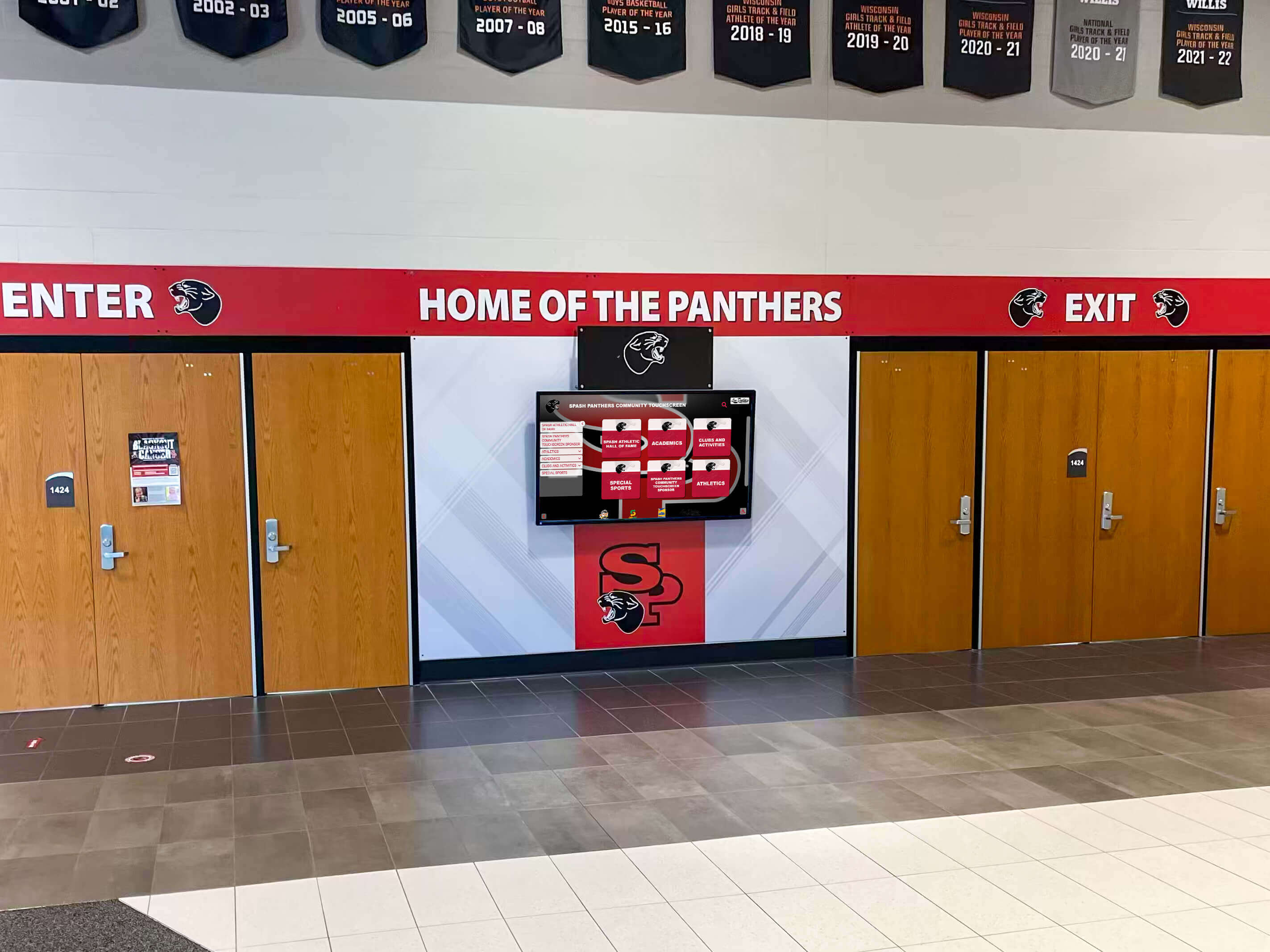
Integration with Academic Support
Connect recognition to support systems:
- Counselors reference honor roll goals in academic planning meetings
- Intervention systems identify students close to qualifying for targeted support
- Tutorial programs emphasize honor roll achievement as attainable goal
- Academic advisory periods discuss strategies for honor roll success
- Teachers provide honor roll progress updates before marking periods end
- Resources made available to help struggling students improve performance
Honor roll becomes more than recognition—it serves as benchmark for academic support and intervention systems.
Family Engagement Emphasis
Actively engage families in honor roll recognition:
- Personal phone calls or emails notifying families of student honor roll achievement
- Family invitation to attend honor roll recognition ceremonies
- Remote viewing options via live-streaming or recorded ceremonies
- Online access to honor roll profiles families proudly share
- Family quotes included in student honor roll profiles
- Newsletter features spotlighting honor roll families
Family involvement amplifies recognition impact while strengthening crucial school-home partnerships supporting student success.
Taking the Next Step
Interactive touch boards transform honor roll recognition from outdated paper lists into engaging digital experiences that appropriately celebrate academic excellence. Modern solutions eliminate the limitations of traditional displays while adding capabilities that significantly enhance student motivation, family engagement, and school culture.
Successful implementation requires thoughtful planning addressing criteria fairness, technology selection, communication strategy, and ongoing program evaluation. Schools that invest in purpose-built recognition platforms designed specifically for educational environments find that these systems deliver outstanding value through ease of use, professional presentation, and features that maximize recognition impact.
Whether modernizing an existing honor roll program or launching new academic recognition initiatives, interactive touch boards provide the foundation for sustainable, effective systems that honor achievement while motivating continued excellence.
Ready to transform your school’s honor roll recognition?
Digital recognition solutions like Rocket Alumni Solutions provide comprehensive platforms specifically designed for academic achievement recognition. Featuring intuitive content management, engaging interactive displays, unlimited recognition capacity, and proven reliability, these purpose-built systems enable schools to celebrate every honor roll student’s achievement through professional presentations that build lasting pride and motivation.
Discover how modern recognition technology can enhance your honor roll program while reducing administrative workload and dramatically increasing student and family engagement.
